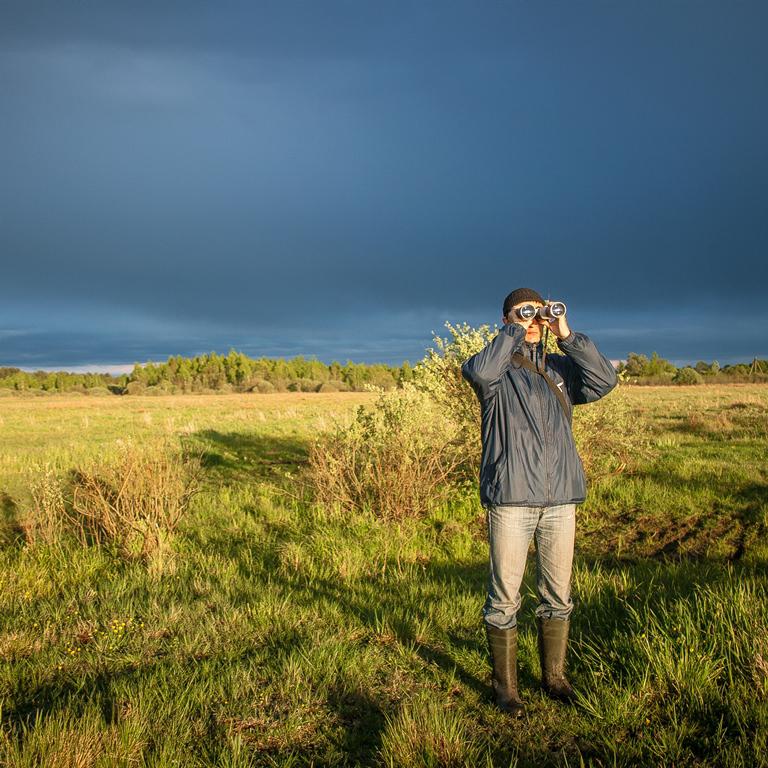Iurii Strus
Other projects
3 Nov 2015
Fen Mires of Ukrainian Polissia – Highly Important Breeding Areas for Rare Waders (Charadrii)
20 Dec 2016
Study and Conservation of Rare Waders (Charadrii) in the Ukrainian Forest Zone
The project aims to study distribution, numbers and habitat requirements of two declining wader species (Gallinago gallinago and G. media) in West Polissia and to distribute relevant information among local communities (especially hunters).

Breeding populations of Great Snipe (Gallinago media) and Common Snipe (Gallinago gallinago) have significantly decreased in Europe in recent few decades. Especially Great Snipe that has become the reason to include this species to IUCN red list. The main reasons of such decline are loss of breeding habitats due to drainage, vegetation succession and extent hunting.
Current situation with these two species is poorly known in Ukraine, because there were no special detailed studies of their numbers and habitat condition. However, according to literature and to our own preliminary data, territory of Western Polissia is of big potential for conservation of these species and their habitats because of still large areas of marshes and river floodplains etc. Great Snipe is listed in the Ukrainian red book. Common Snipe is a hunting species. But only small number of Ukrainian hunters can correctly identify this two species. As a result, Great Snipe often becomes a victim of mistaken hunting.
Planned research of Snipes numbers will allow us to estimate current population size of these species and their numbers on migration in Polissia region. This will be a good starting point for the further monitoring of population state in future. Also we plan to prepare the cadastre and GIS maps of distribution of breeding localities of two species. This will be a good base for establishing new nature reserves in the region. After assessment of habitat condition and threats to the breeding and stopover sites we will develop instructions for optimal conservation of Snipes and their habitats. As both species are closely related to wetlands (marshes, flood plains etc.), which are one of the most threatened habitats, conservation of Snipes breeding localities will improve conservation of other wetland birds (and possibly other animals) too. Planned booklet with guidance on Snipe identification and with information about their biology will improve knowledge level of hunters and local people about these birds, and decrease frequency of mistaken hunting.